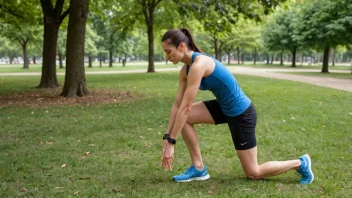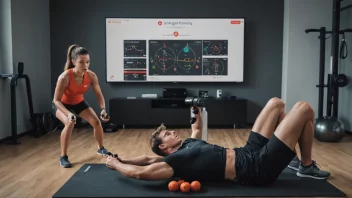The integration of technology into athletic training has opened up new avenues for improving performance while ensuring safety. Fitness gadgets, including smartwatches, heart rate monitors, and fitness apps, have become essential tools for athletes looking to optimize their workouts. These devices not only track performance but also provide vital feedback that helps in refining training methods and achieving fitness goals. This article delves into how fitness gadgets can be effectively used to enhance training performance.
One of the most significant benefits of fitness gadgets is their ability to collect and analyze data. Smartwatches and fitness bands can monitor various parameters such as heart rate, sleep patterns, and physical activity levels. This data is invaluable for athletes as it offers insights into their physical condition and training effectiveness. For instance, by tracking heart rate variability, athletes can understand their recovery status and adjust their training intensity accordingly, preventing overtraining and injuries.
Fitness apps, often used in conjunction with wearables, provide an interactive platform for training. These apps allow athletes to log workouts, set personal records, and create custom training plans based on their goals. The ability to track progress over time can be highly motivating, as it provides tangible evidence of improvements. Additionally, many apps offer community features where users can share their achievements and challenges, fostering a sense of accountability and support among athletes.
For those engaged in endurance sports, GPS-enabled devices are a game-changer. Cyclists and runners can use these gadgets to map their routes, monitor pace, and analyze performance metrics such as elevation gain and speed. This detailed data helps athletes to identify strengths and weaknesses in their training, enabling them to make necessary adjustments. For example, someone training for a marathon might use GPS data to practice pacing strategies and ensure they are properly prepared for race day.
Safety is another critical aspect where fitness gadgets shine. Devices equipped with safety features, such as fall detection or emergency alerts, provide peace of mind during solitary training sessions. For example, a cyclist riding alone can benefit from a smartwatch that automatically sends an alert to emergency contacts if it detects a fall, ensuring help is on the way if needed. This feature is especially important for outdoor athletes who may train in remote areas.
In conclusion, fitness gadgets are powerful tools that can significantly enhance training performance while prioritizing athlete safety. By harnessing the data and features offered by these devices, athletes can better understand their bodies, set meaningful goals, and train smarter. As technology continues to advance, the role of fitness gadgets in sports training will only grow, making them indispensable for anyone committed to improving their athletic performance.
Boost Training with Smart Fitness Devices
Discover how smart fitness devices can enhance your training performance while ensuring safety.






